Osteocephalus planiceps
—
Flat-headed Bromeliad Treefrog
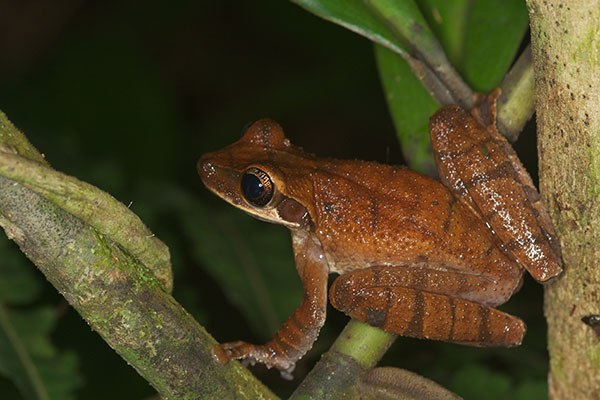
The different Osteocephalus species in this area can be difficult to distinguish. I believe this one is Osteocephalus planiceps based on the relatively large tympanum, the dark bars across the back as well as the legs, and the dark radial lines in the iris.
Here is a complete list of the herps I saw in the wild on my 2013 MT Amazon Expeditions trip.
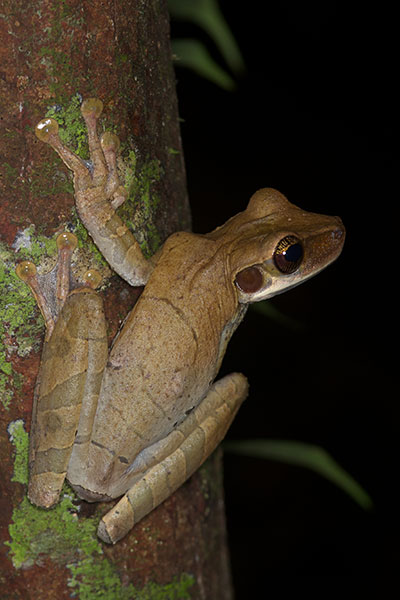
Here's another big Osteocephalus, which I think is O. planiceps for the same reasons given for the previous photo.
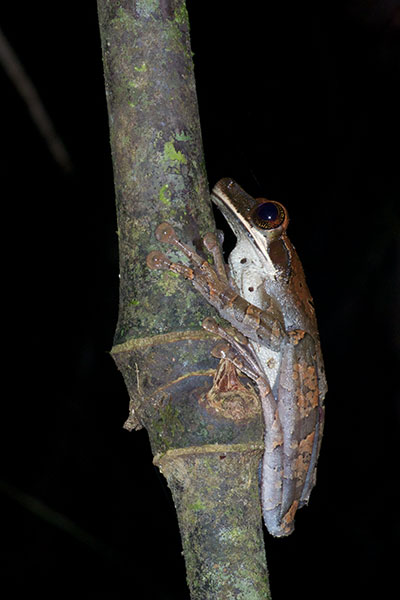
And another from a year later. A fine-looking frog, this.
Here is a complete list of the herps I saw in the wild on my 2014 MT Amazon Expeditions trip.
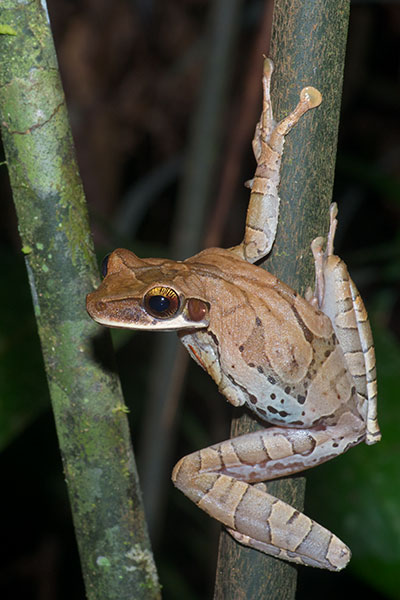
I believe that the radiating lines in the iris, the relatively large tympanum, and the white supralabial area identify this frog as O. planiceps rather than one of the other local Osteocephalus species.
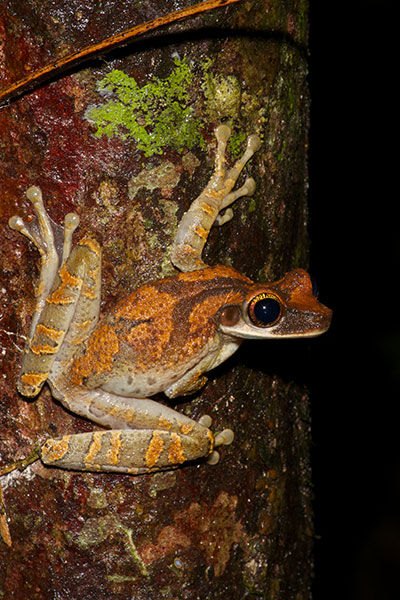
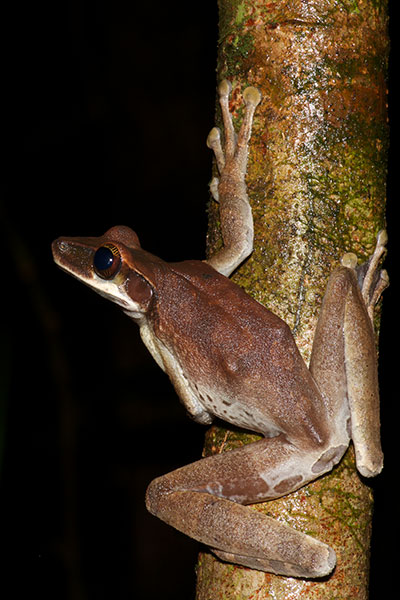
Two more big, attractive treefrogs poised to leap away. The first one here is probably the prettiest Osteocephalus I've ever seen.
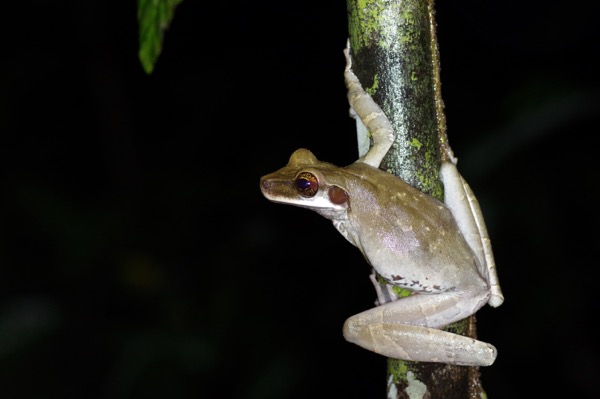
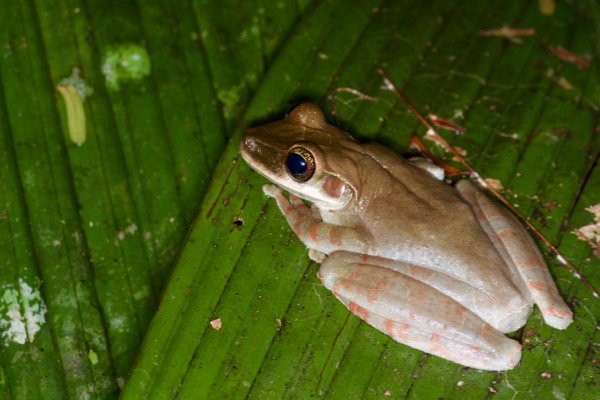
A pair of these frogs that illustrates their variability in color. The one at the bottom is the first I've seen with that rosy tint to its stripes.
My Travelogues and Trip Lists page includes a complete list of the herps I saw in the wild on my 2016 MT Amazon Expeditions trip.
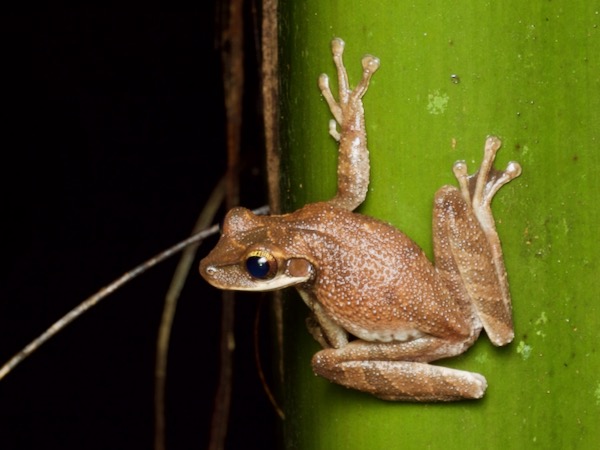
If I were a tasty insect I would not want to be about two inches to the left of this scene.
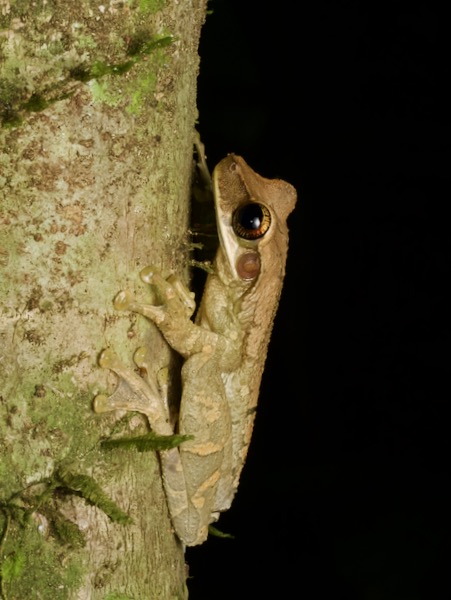
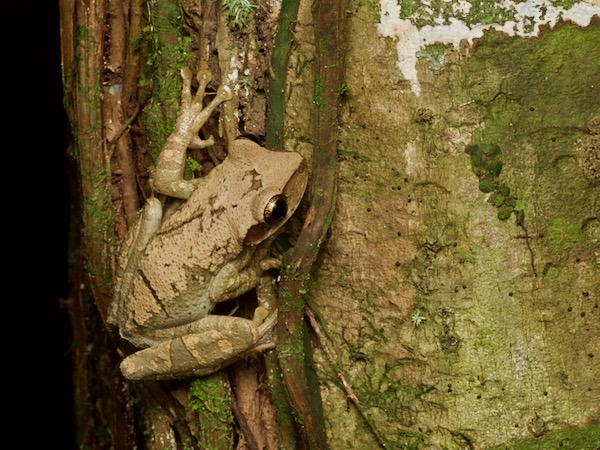
I suspect this is Osteocephalus planiceps based on the eye reticulations, white patch beneath the eye, and pronounced canthus rostralis (ridge between middle of eye and snout). But there are several Osteocephalus species around, and maybe one of the others sometimes looks just like this. The back looks like it has been scraped up by propellors manatee-style, but this might be a natural pattern rather than damage.
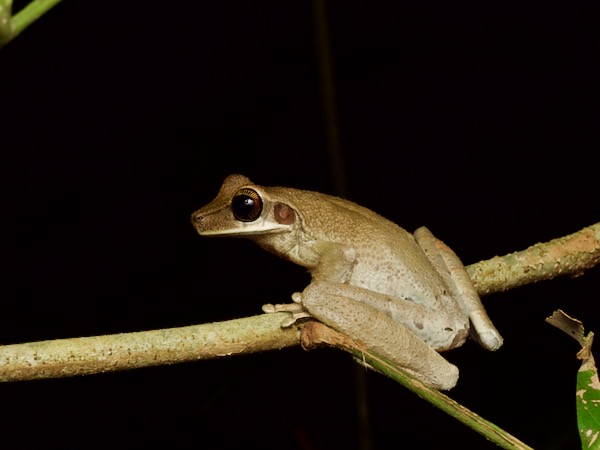
This is a rather plain-looking individual. I award it only 6 points out of 10.
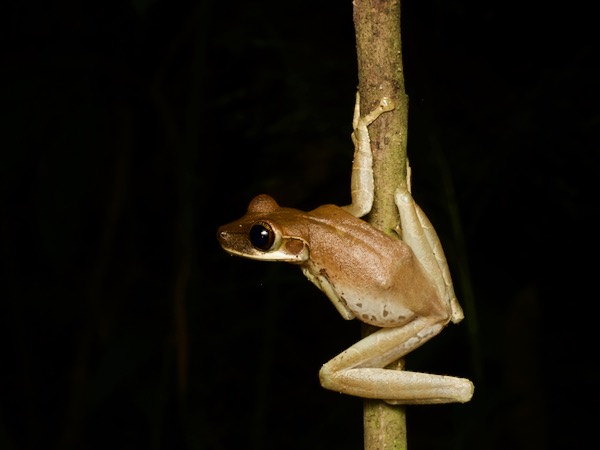
This is another rather plain-looking individual, but it still earns points for striking the beloved classic pose. 8 out of 10.
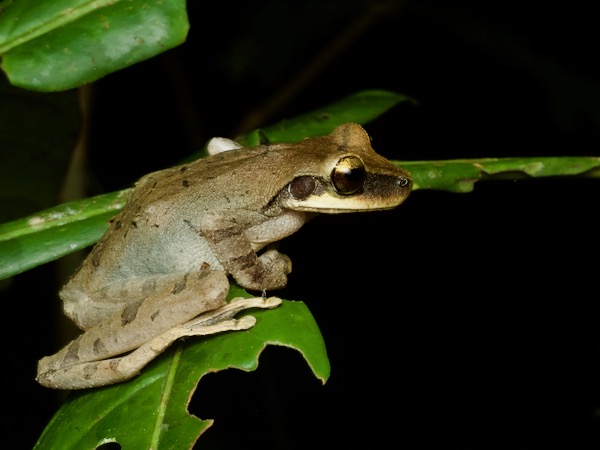
I wonder who it is shaking its tiny little fist at?
Printed references:
- Bartlett, R.D., and Bartlett, P. 2003. Reptiles and Amphibians of the Amazon: An Ecotourist's Guide
- Rodríguez, L. O. and Duellman, W. E. 1994. Guide to the Frogs of the Iquitos Region, Amazonian Peru